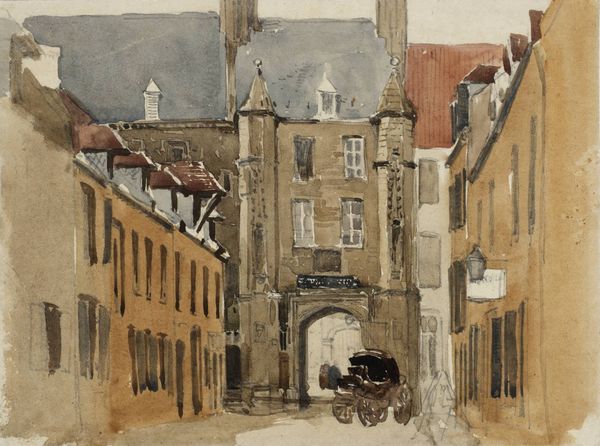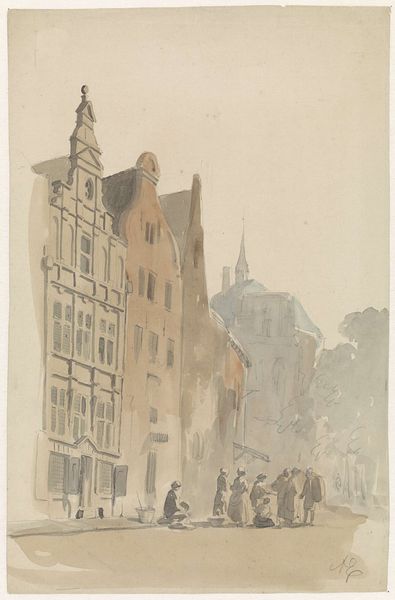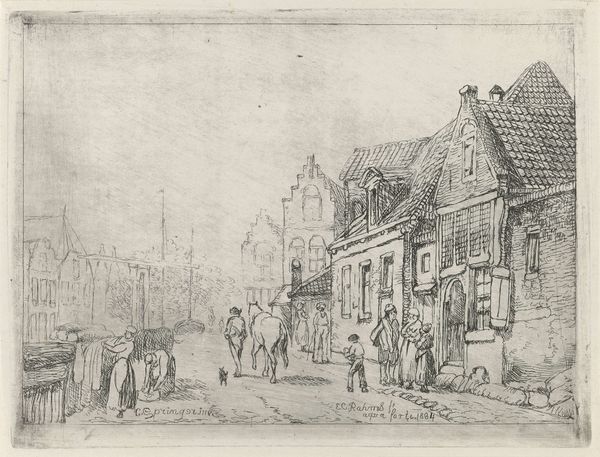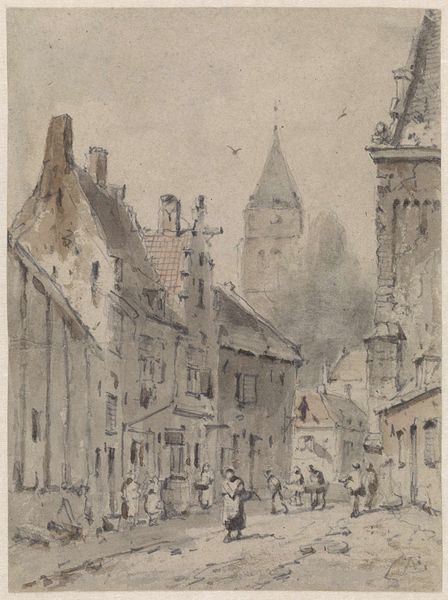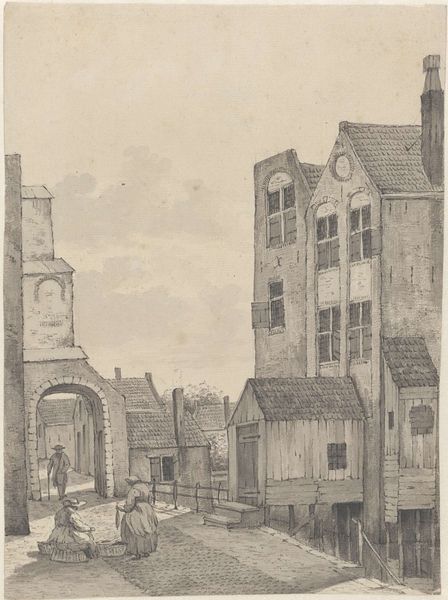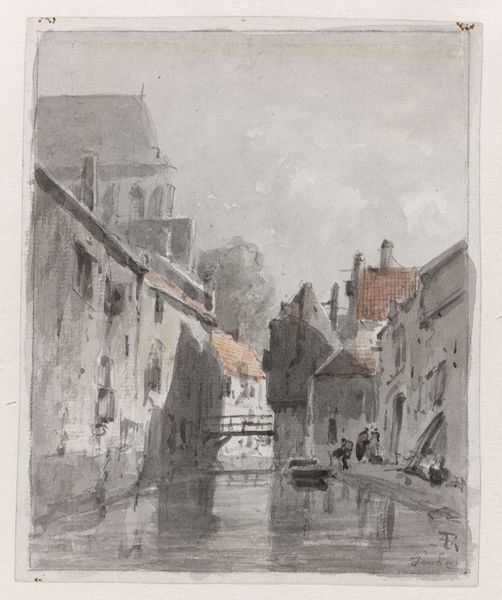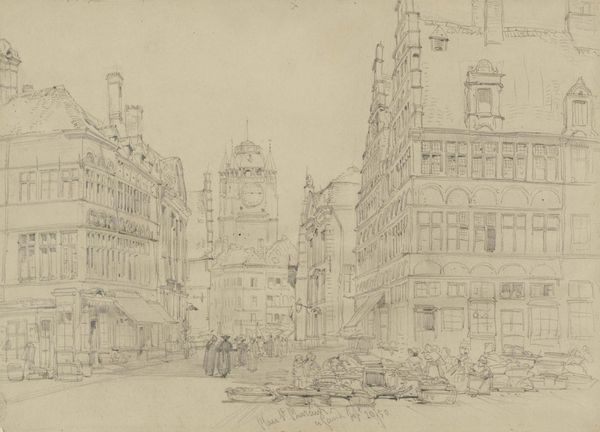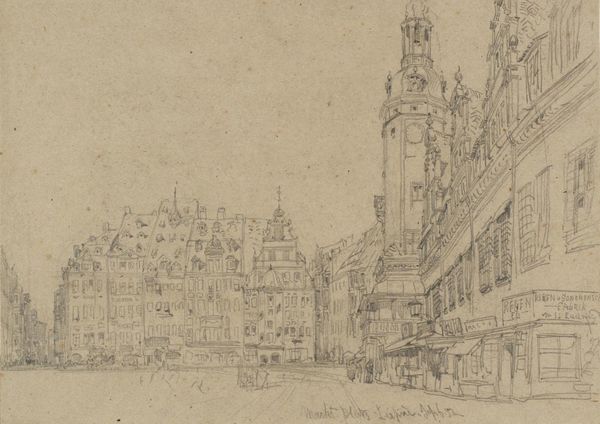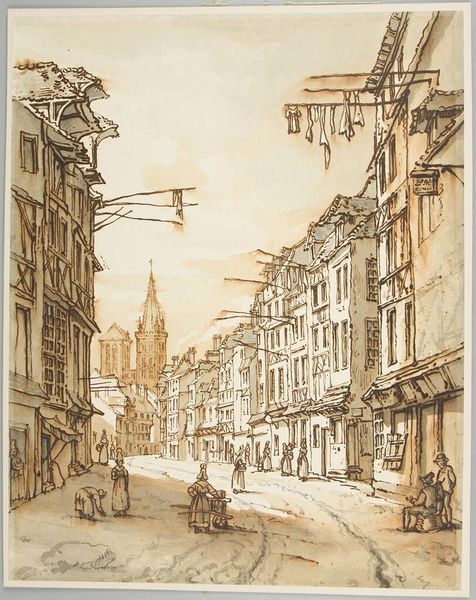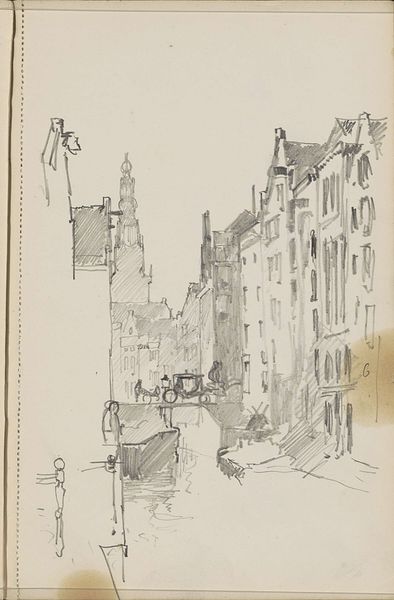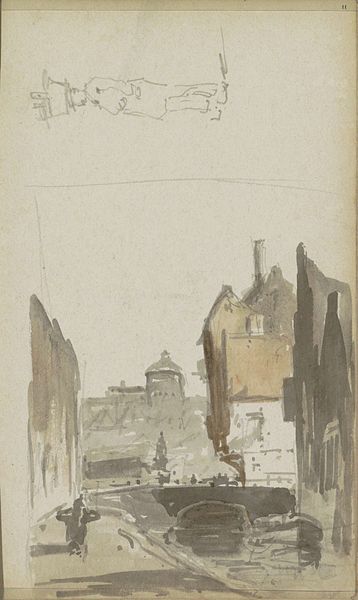
watercolor
#
water colours
#
landscape
#
watercolor
#
line
#
cityscape
#
genre-painting
#
watercolor
#
realism
Copyright: Public Domain: Artvee
Curator: The scene feels so…bleak, despite being a marketplace. A muted palette, unfinished sketches. The buildings lean inwards, like they’re trying to escape something. Editor: What you’re sensing may very well be a commentary on the period! This watercolor, titled "A French Market Place" by David Cox, painted in 1829, invites us to reflect on the intersection of commerce and the lives of ordinary people within the urban fabric of early 19th century France. Curator: "Ordinary" is interesting. It's certainly not glorifying wealth or aristocracy. Is this more social observation? It has a documentary feel in the sense that the people look like they just exist, doing daily actions without grandeur, though it still lacks clarity and remains somehow ephemeral, like it could vanish any minute. Editor: Indeed! Cox situates the working class within a recognizable locale, implicitly granting validity and visibility to their daily lives and activities. The composition isn't concerned with heroic narratives but, in many ways, subverts it through its muted tone. He prompts us to think about what kind of stories are valued in history painting. The architectural styles visible hint at a society stratified through economics. Curator: Look at the implied movement within the market! How women’s dresses are drawn, the body language within the groups. Even with the pale coloring, there's such kinetic energy there! But does this work elevate this class structure by depicting them, or simply act as voyeurism, considering who the work was likely made for? Editor: An essential point. I think that watercolor as a medium also impacts its perception, signaling accessibility because of the affordability of paper and paint in contrast to oil painting on canvas. Cox uses delicate layering techniques that democratize not just the subject, but the means and act of making. Its transparency shows openness for a potential reinterpretation. Curator: Perhaps what I found melancholic initially is, in fact, hopeful because the lack of imposed artistic intention implies open possibilities for interpreting life. Editor: Absolutely. Looking closely at the lines in relation to social conditions allows for richer and more multifaceted engagements that might address ongoing social hierarchies that have existed throughout centuries. Curator: This pushes me to rethink how these paintings might act as vehicles for recognizing marginalized subjectivities throughout history, a challenge against established social narratives! Editor: Precisely. Let’s go see how others achieve the same result.
Comments
No comments
Be the first to comment and join the conversation on the ultimate creative platform.

